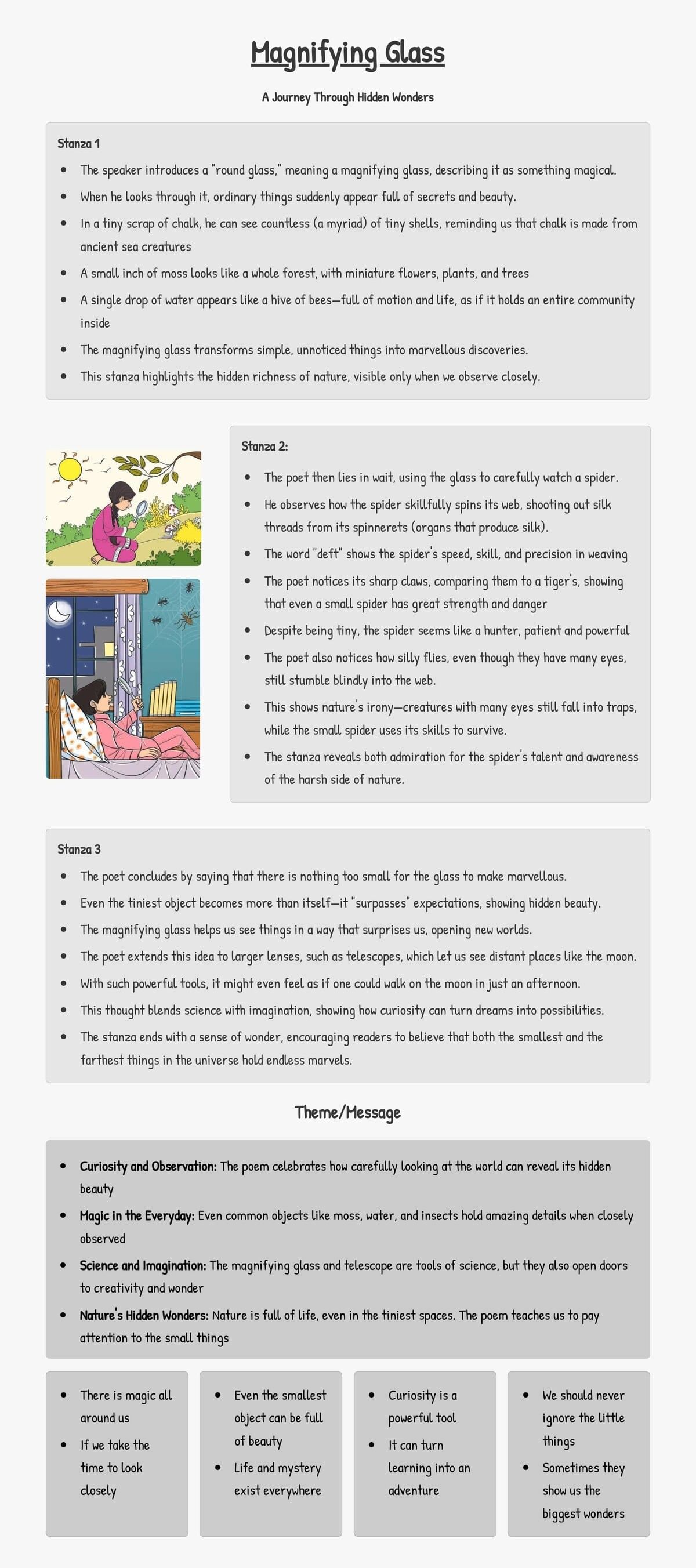Class 8 Exam > Class 8 Notes > English Poorvi Class 8 - New NCERT > Visual Story: Magnifying Glass
Visual Story: Magnifying Glass | English Poorvi Class 8 - New NCERT PDF Download

The document Visual Story: Magnifying Glass | English Poorvi Class 8 - New NCERT is a part of the Class 8 Course English Poorvi Class 8 - New NCERT.
All you need of Class 8 at this link: Class 8
|
57 videos|445 docs|57 tests
|
FAQs on Visual Story: Magnifying Glass - English Poorvi Class 8 - New NCERT
| 1. What is a magnifying glass and how does it work? |  |
Ans.A magnifying glass is a simple optical instrument that uses a convex lens to magnify objects. When light rays pass through the convex lens, they are refracted, causing the light to converge and create a larger image of the object being viewed. This allows users to see finer details that are not visible to the naked eye.
| 2. What are the historical uses of magnifying glasses? |  |
Ans.Magnifying glasses have been used since ancient times, with the earliest known mentions dating back to the Roman Empire. They were primarily used by scholars and scientists for reading small texts and examining tiny objects. The invention of the first eyeglasses in the 13th century also marked a significant advancement in the use of lenses for magnification.
| 3. What are some practical applications of magnifying glasses in everyday life? |  |
Ans.Magnifying glasses are widely used in various fields including education, science, and hobbies. They help students and researchers observe small specimens, read fine print, and conduct detailed work in areas like electronics or crafting. Additionally, they are helpful for individuals with visual impairments to read labels and small texts.
| 4. How do magnifying glasses differ from other optical instruments, like microscopes? |  |
Ans.Magnifying glasses and microscopes both serve to magnify objects, but they differ in their complexity and application. A magnifying glass is a simple, handheld tool suitable for viewing objects at a relatively low magnification, typically up to 10x. In contrast, a microscope employs multiple lenses and light sources to achieve much higher magnifications, often necessary for viewing microscopic organisms or cells.
| 5. What factors should be considered when choosing a magnifying glass? |  |
Ans.When selecting a magnifying glass, factors such as magnification power, lens size, and ergonomics should be considered. Higher magnification can provide more detail but may also reduce the field of view. Additionally, a larger lens allows for viewing bigger objects, while comfort and ease of use are important for extended periods of use.
Related Searches















